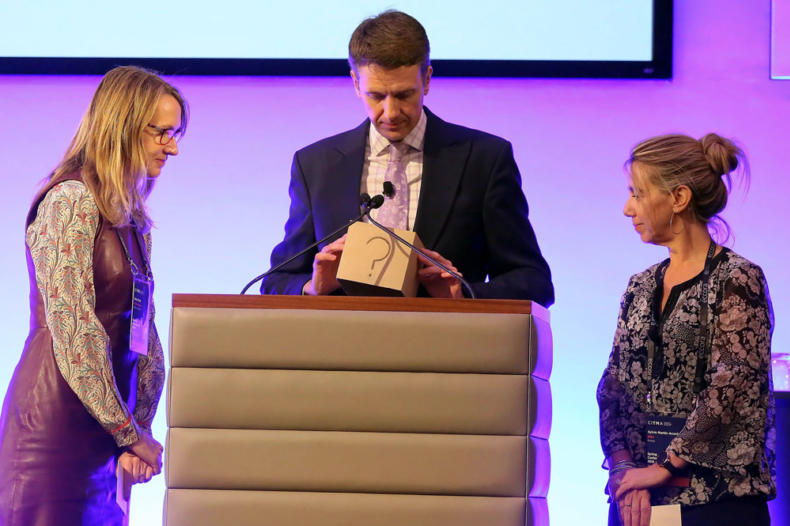Magic boxes and dispute resolutions
‘What’s in the box?’ It was the question asked by barrister and magician Guy Hollingworth to introduce the engaging subject of mediation in trade mark disputes.

‘Mediation is incredibly well suited to trade mark disputes,’ Guy told his audience, opening the last lecture of the day at this year’s Spring Conference.
As mediation is an alternative dispute resolution (ADR) to litigation, Guy seemed to know his statement would be contentious. So he followed it with, to our surprise, a magic trick. One involving our President, Tania Clark, as well as the previous speaker, Sylvie Martin of IBM.
Tania and Sylvie stood on either side of Guy’s lectern. On the lectern itself sat a box with a question mark on it.
‘Disputes are often caused when people don’t tell the truth,’ said Guy, as he handed Tania and Sylvie an envelope each. Inside the envelopes was an instruction, telling them whether they should lie or tell the truth about what was in the box.
When invited to have a look inside, Sylvie stated the box contained four white circles. Tania confidently said five white cubes.
‘We have a dispute,’ Guy exclaimed. ‘So, who do we believe?’
Despite being on home ground, our President didn’t gain the trust of the audience. According to them, Sylvie was telling the truth. Were they correct? No. So, Sylvie was lying? Not quite.
‘Truth’ was written on the card inside both envelopes (much to everyone’s confusion). ‘When we hear two contradictory versions of events, we assume that one person must be right, and one person must be wrong,’ Guy explained. That wasn’t the case here though. Guy had tricked his two guests. And us, his audience.
Inside the box was a mysterious item called the Ambiguous Cylinder, invented by a Japanese mathematician. When placed beside a mirror, the cylinder looks like four white circles from one side, but five white cubes from the other.
‘The tools we have at our disposal as lawyers are not always the most effective, or the best,’ said Guy, when the audience had settled down again. ‘Certainly if you’re trying to find common ground or a solution to a problem.’
To resolve a problem, or a dispute, being able to see what’s on both sides at the same time is very helpful to everyone involved. Nothing hidden, no tricks, no one right, no one wrong. This is where mediation comes into its own as an alternative to litigation.
The neutral mediator helps the two parties try to find common ground, without attempting to impose their own solution. The process can lead people away from their adopted positions, usually, ones that focus on legal rights and wrongs, towards the interests and needs of both parties—and how they can be met.
Despite what Guy calls the ‘adversarial tradition prevalent throughout Europe,’ which favours litigation, mediation is gradually becoming more widely used. Perhaps because it’s considerably cheaper than litigation. Or maybe because it’s been tremendously successful so far.
The overall success rate is 89%, with most disputes being settled on the day. It’s no wonder then that mediation in trade mark disputes is being encouraged on both a national and international level.
Guy Hollingworth is a barrister for One Essex Court, as well as a mediator, author and magician.

